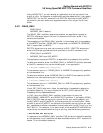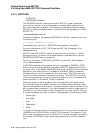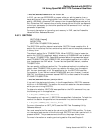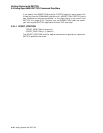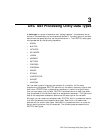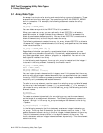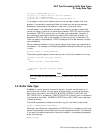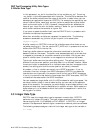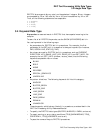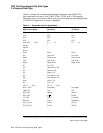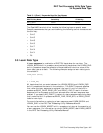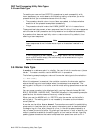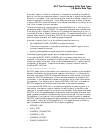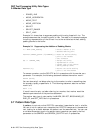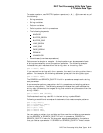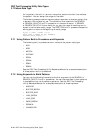
DEC Text Processing Utility Data Types
3.3 Integer Data Type
DECTPU also supports binary, octal, and hexadecimal integers. Binary integers
are preceded by %b or %B, octal by %o or %O, and hexadecimal by %x or %X.
Thus, all the following statements are acceptable:
x := %B10000;
x := %o20;
x := %X130;
x := 12345;
3.4 Keyword Data Type
Keywords are reserved words in DECTPU that have special meaning to the
compiler.
To see a list of all DECTPU keywords, use the SHOW (KEYWORDS) built-in.
You use keywords in the following ways:
• As parameters for DECTPU built-in procedures. For example, the first
parameter of the SET built-in procedure is always a keyword (for instance,
PAD, SCROLLING, STATUS_LINE).
• As values returned by DECTPU built-in procedures, such as CURRENT_
DIRECTION, KEY_NAME, LAST_KEY, READ_KEY, and GET_INFO. For
example, the call GET_INFO (window,
"status_video") has the following
keywords as possible return values:
BLINK
BOLD
NONE
REVERSE
SPECIAL_GRAPHICS
UNDERLINE
• As pattern directives. The following keywords fall into this category:
ANCHOR
BUFFER_BEGIN
BUFFER_END
LINE_BEGIN
LINE_END
PAGE_BREAK
REMAIN
UNANCHOR
These keywords, which behave like built-in procedures, are described in the
DEC Text Processing Utility Reference Manual.
• To specify the DECTPU data types (BUFFER, MARKER, LEARN, and so on).
• To report warning or error status conditions (TPU$_BADMARGINS, TPU$_
CREATEFAIL, TPU$_NOEOBSTR, and so on).
• To pass the names of keys to DECTPU procedures.
DEC Text Processing Utility Data Types 3–5



